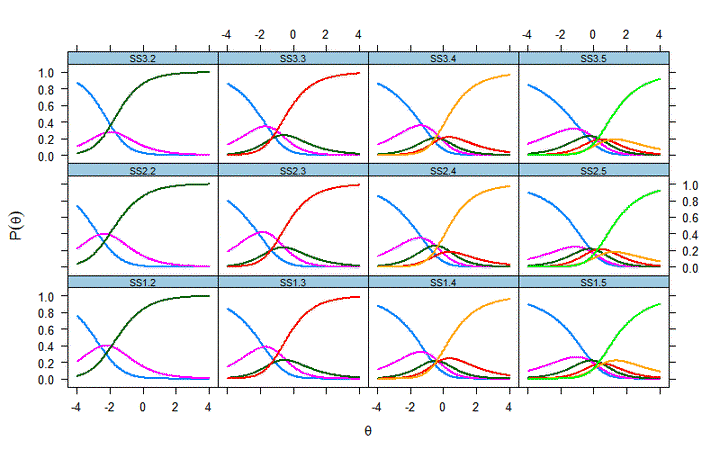An item response theory approach to the measurement of working memory capacit Theory
 Item Tracelines from a Generalized Partial Credit Model of Symmetry Span Task
Item Tracelines from a Generalized Partial Credit Model of Symmetry Span Task
Abstract
Complex span tasks are perhaps the most widely used paradigm to measure working memory capacity (WMC). Researchers assume that all types of complex span tasks assess domain-general WM. However, most research supporting this claim comes from factor analysis approaches that do not examine task performance at the item level, thus not allowing comparison of the characteristics of verbal and spatial complex span tasks. Item response theory (IRT) can help determine the extent to which different complex span tasks assess domain-general WM. In the current study, spatial and verbal complex span tasks were examined using IRT. The results revealed differences between verbal and spatial tasks in terms of item difficulty and block difficulty, and showed that most subjects with below-average ability were able to answer most items correctly across all tasks. In line with previous research, the findings suggest that examining domain-general WM by using only one task might elicit skewed scores based on task domain. Further, visuospatial complex span tasks should be prioritized as a measure of WMC if resources are limited.